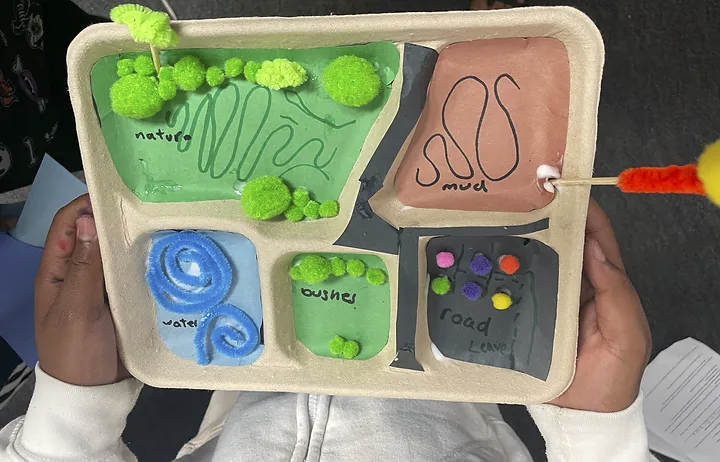
As we journey through the Five Approaches to Futures Thinking by Stanford d.School, let’s step into the captivating space of “Worldbuilding.” The previous approach, “Tracing Change Across Time” encouraged us to break away from linear perceptions and cultivate an understanding of patterns and shifts over time. Worldbuilding takes us further by allowing us to envision the future in rich, imaginative detail.
The Stanford d.School describes worldbuilding as “an architectural blueprint of a future society that has character, depth, foundational infrastructure, and logical mechanisms of connection.” It’s storytelling in vivid detail, creating colorful and textured narratives that breathe life into future contexts. Worldbuilding is a carefully thought-out exercise, based on more than speculative imagination. It provides a detailed framework for building a future that is both captivating and logically consistent.
MAKING CONNECTIONS WITH STEAM

In the “Cooler Communities” STEAM curriculum designed for 5th graders in San Diego, students engage in their own form of worldbuilding by studying their local environment. Using real-world data sets, satellite imagery, and localized temperature measurements, educators Zoë Randall and Alaska English spearheaded the design of a project called, “Cooler Communities” that has students explore how different elements—from land surface temperatures to vegetation—affect the climate.
By taking on design challenges aimed at combating urban heat, students critically analyzed and modeled their existing world, imagining ways to make their future communities more sustainable.
This worldbuilding activity enables students to visualize and interact with complex climate data. Students correlate data to real locations in their community, adding layers of complexity and interactivity to their understanding of climate change. In this way, they are not just passive recipients of knowledge but active constructors of their learning universe.
This form of applied worldbuilding allows students to immerse themselves in a tangible realm where science, technology, and community engagement converge.
Crafting Narratives with Depth and Complexity
Another way to incorporate this approach into your curriculum is through science fiction writing, a genre well-suited for delving into intricate societal and ethical issues. Works by authors such as Octavia Butler can serve as guides to help students hone their speculative writing skills. These writing assignments offer students a creative platform to apply their imagination in innovative and engaging ways.
The objective is to design a coherent world where each element—from the laws of physics to societal norms—has a role to play. This creative process encourages students to think critically about the implications of technology, social structures, and even cosmic phenomena in their imagined worlds.
Digital media projects also offer a compelling way to bring these imagined worlds to life. Digital storytelling can add layers of interactivity and realism to these fictional worlds through the use of animated videos, interactive websites, or augmented reality. Such platforms provide students with a variety of canvases to explore their understanding of complex systems, providing both a channel for creativity and a medium for learning.
Bridging Reality and Imagination
Worldbuilding offers a unique opportunity for students to prototype solutions to real-world problems. Prototyping, traditionally a concept rooted in design thinking and engineering, takes on a new dimension in this context. This process involves more than sketching objects or concepts. Students construct comprehensive social systems and governance structures. This not only enhances their critical thinking but also cultivates their ability to envision interconnected systems.
History students might create “Choose Your Own Adventure” stories, incorporating key events to explore alternative outcomes. Science students could model the ecology of fictional planets, while ethics or governance students draft constitutions for their invented societies. By engaging in this form of storytelling, students can better understand the complexities of systems, relationships, and scenarios in our own world, making it a potent tool for shaping both future narratives and future realities.
Preparing Students for an Uncertain Future
Worldbuilding can operate as an interdisciplinary approach to futures thinking. Creating rich, detailed scenarios encourages us to question our assumptions about the present and ponder the complexities of future societies. It equips students with the tools to navigate an uncertain future actively, much like how the “Cooler Communities” activity fortified their understanding of empathy for future generations.
Incorporating this approach into our teaching practices fosters our students’ imaginative capabilities and the essential skills for navigating a rapidly changing world. It can also serve as a transformative educational strategy, nurturing the next generation of thinkers who are capable of shaping a more resilient and innovative future.
The Futures Thinking Approaches were developed at the Stanford d.School and can be explored in more depth at this link.